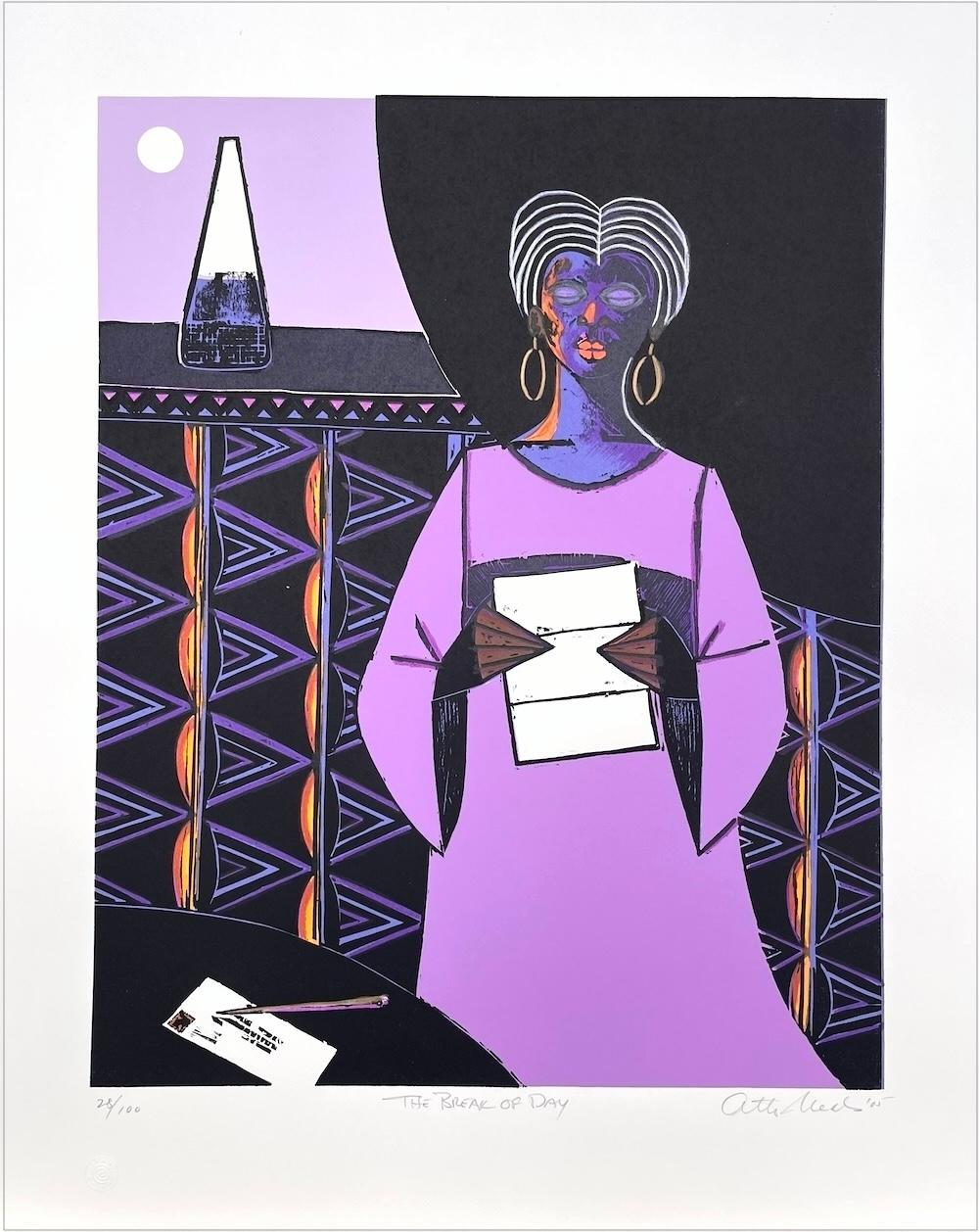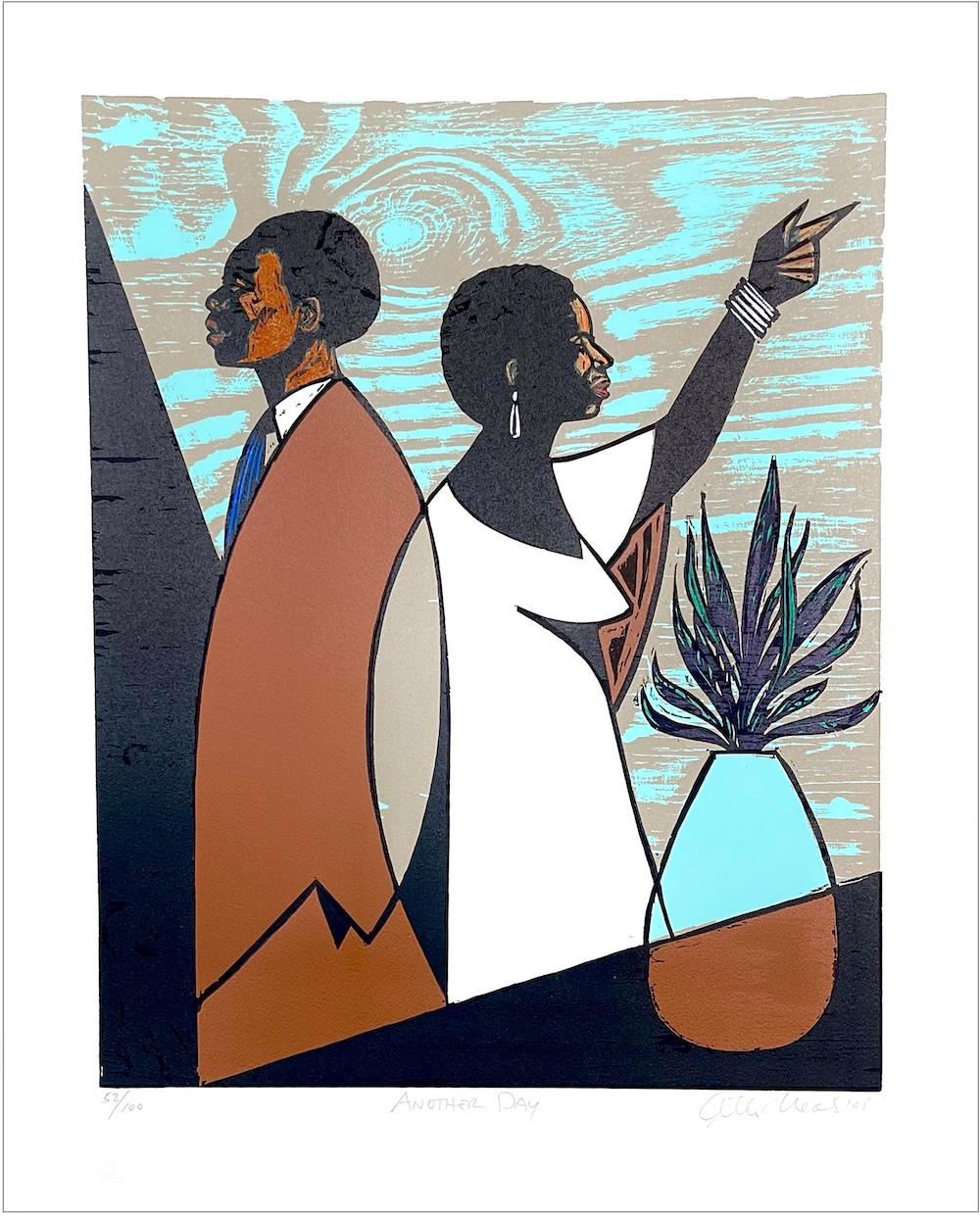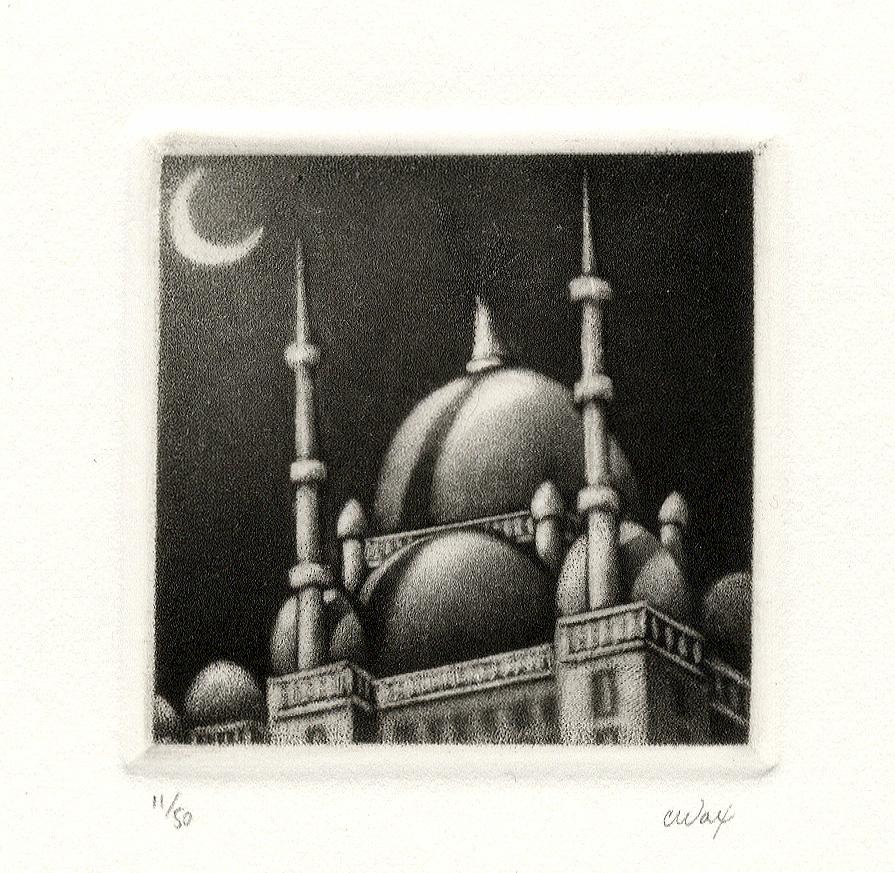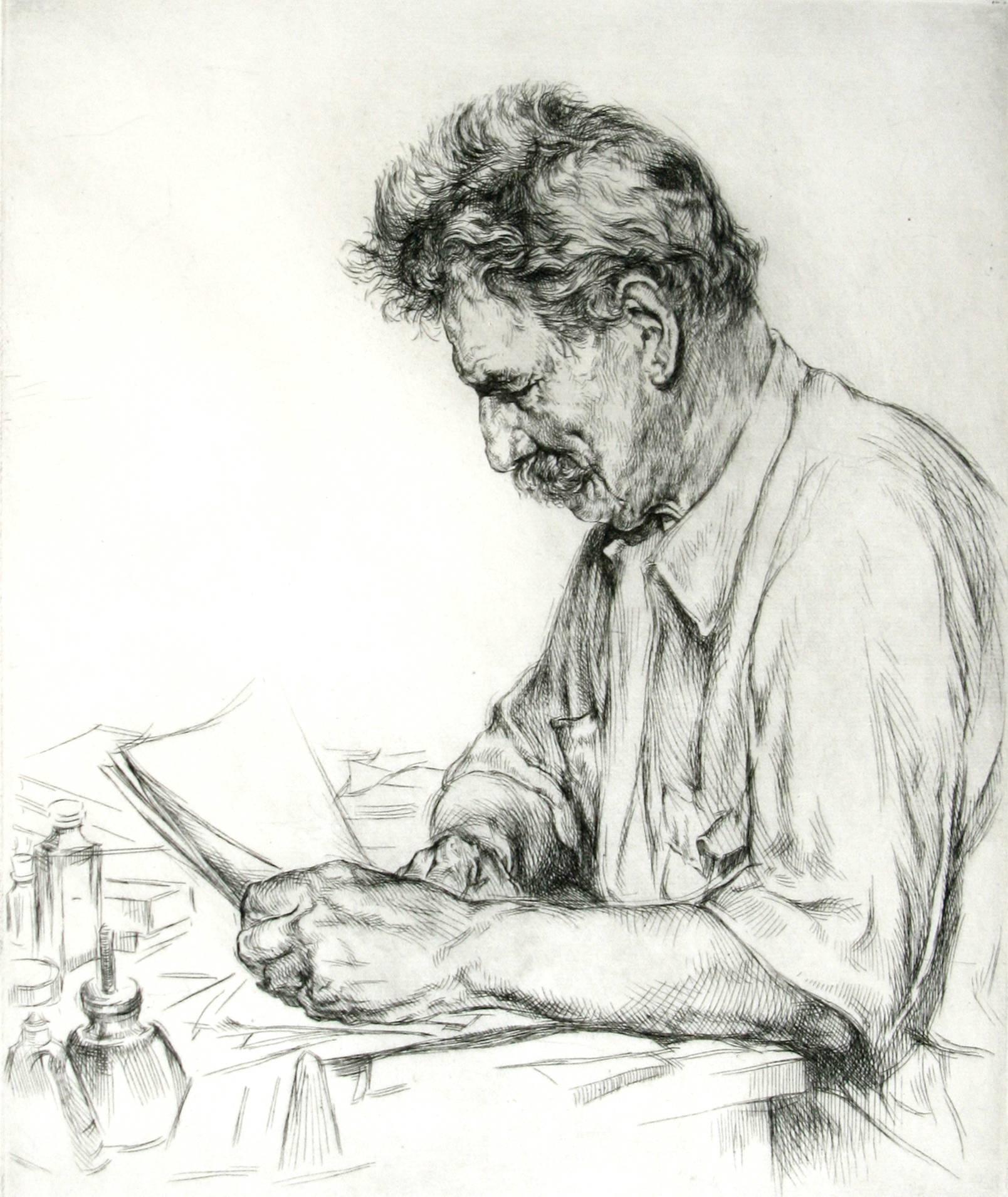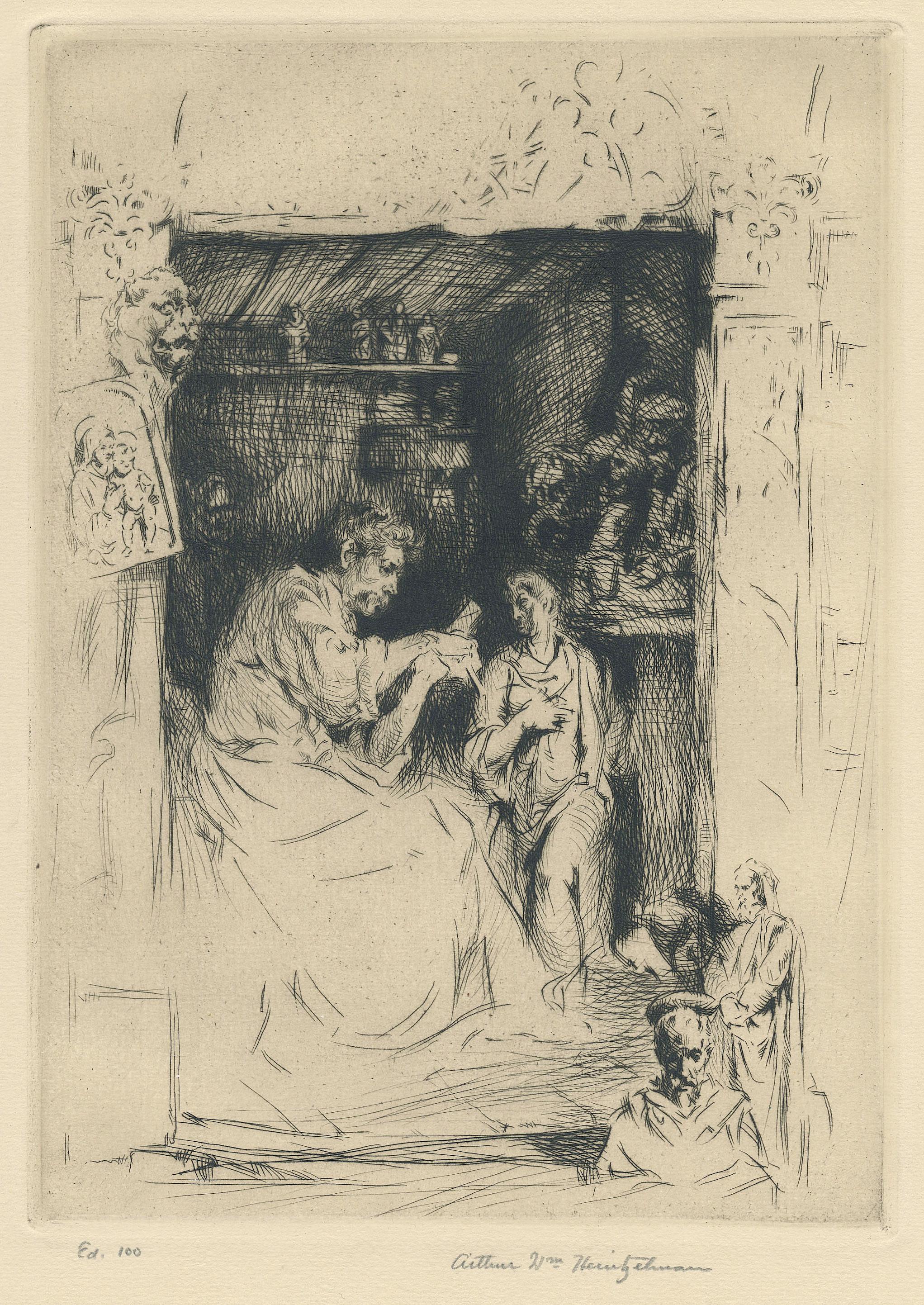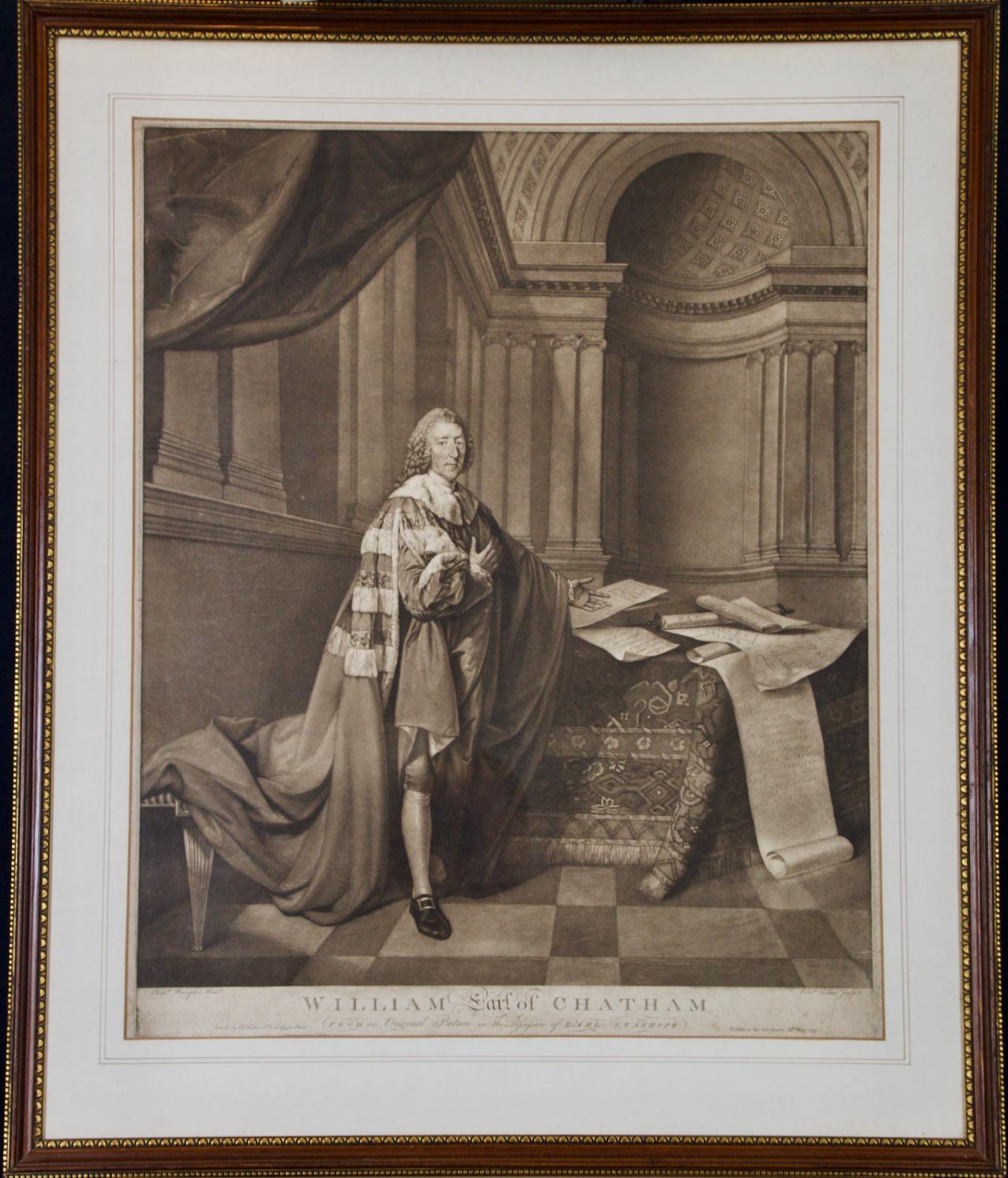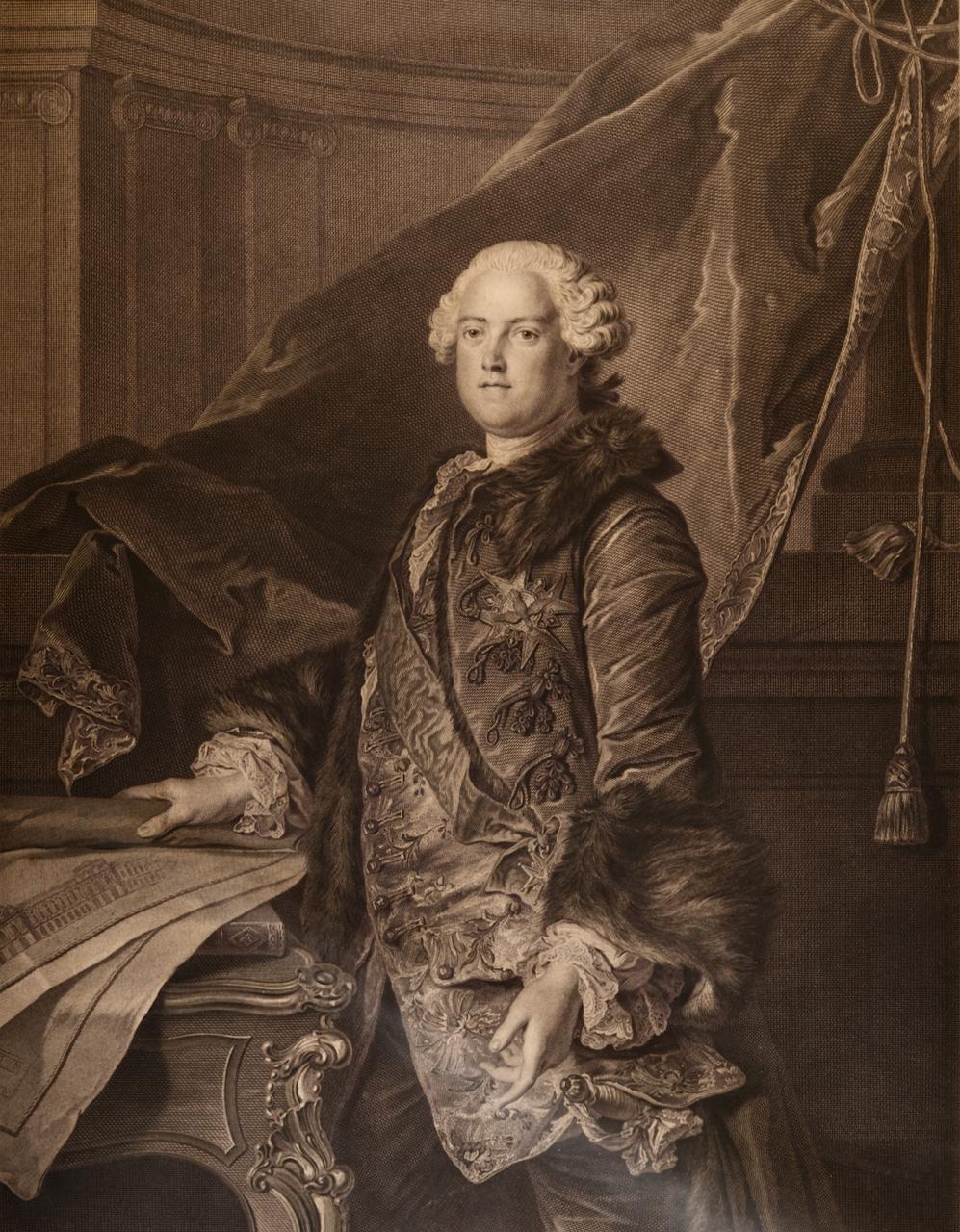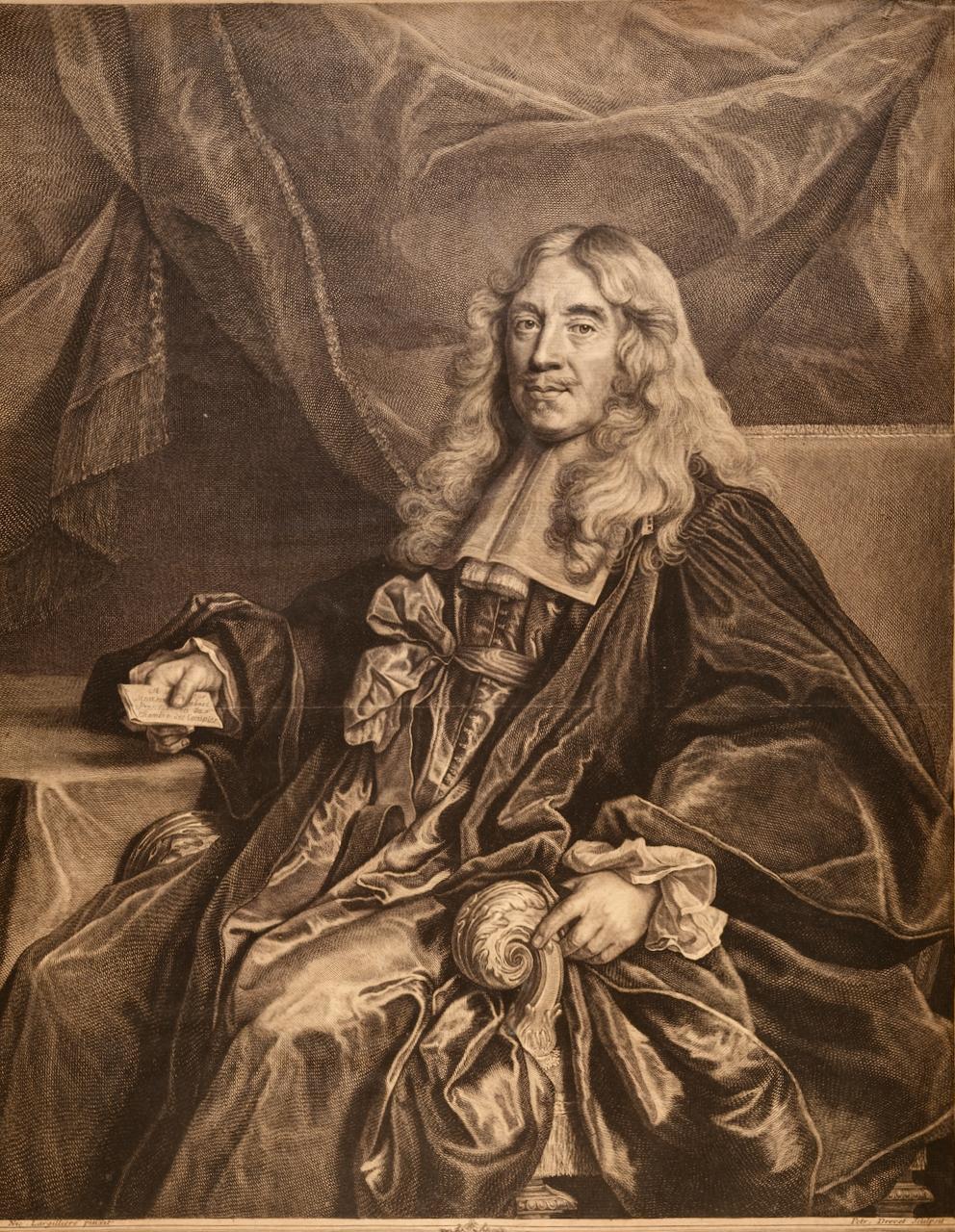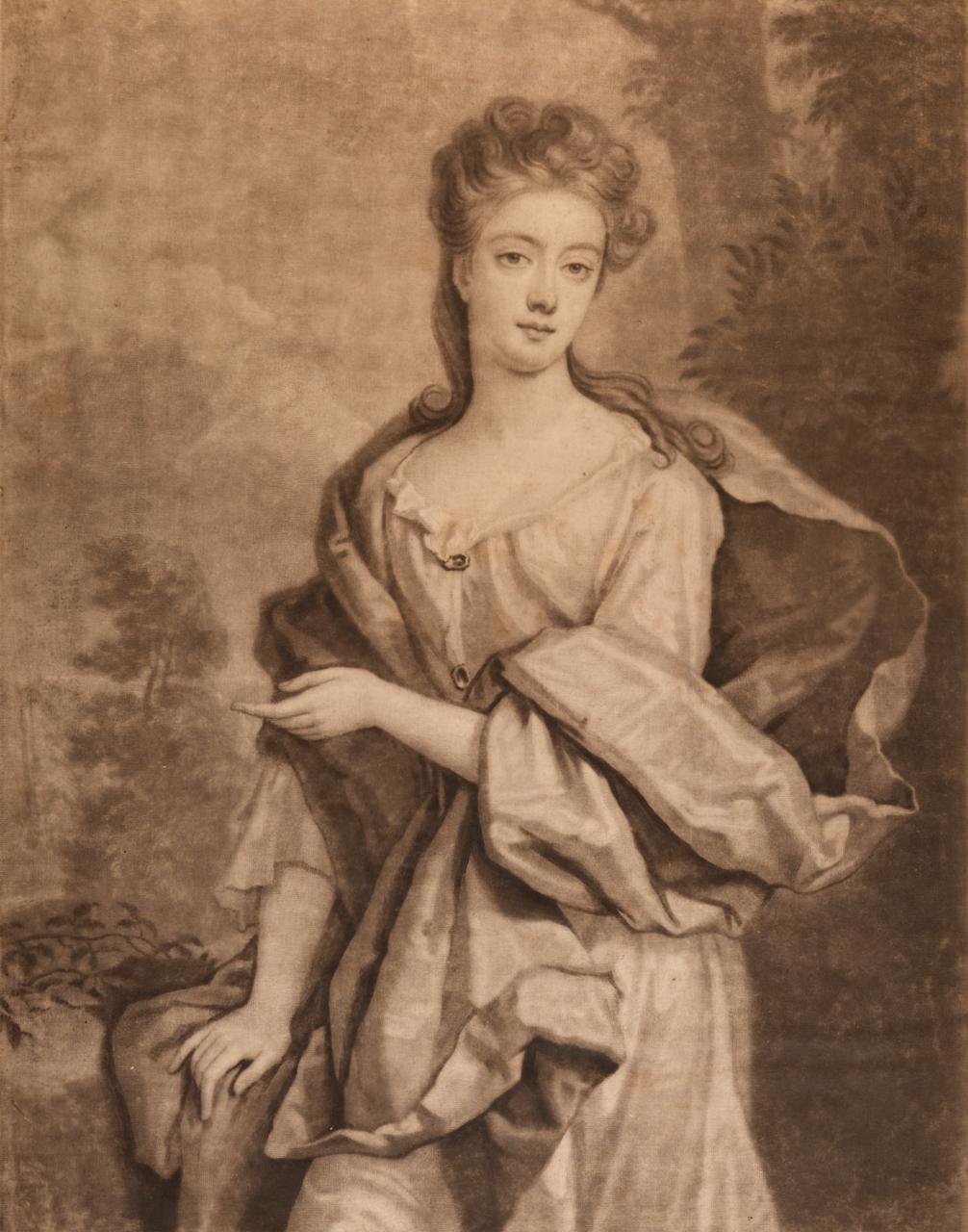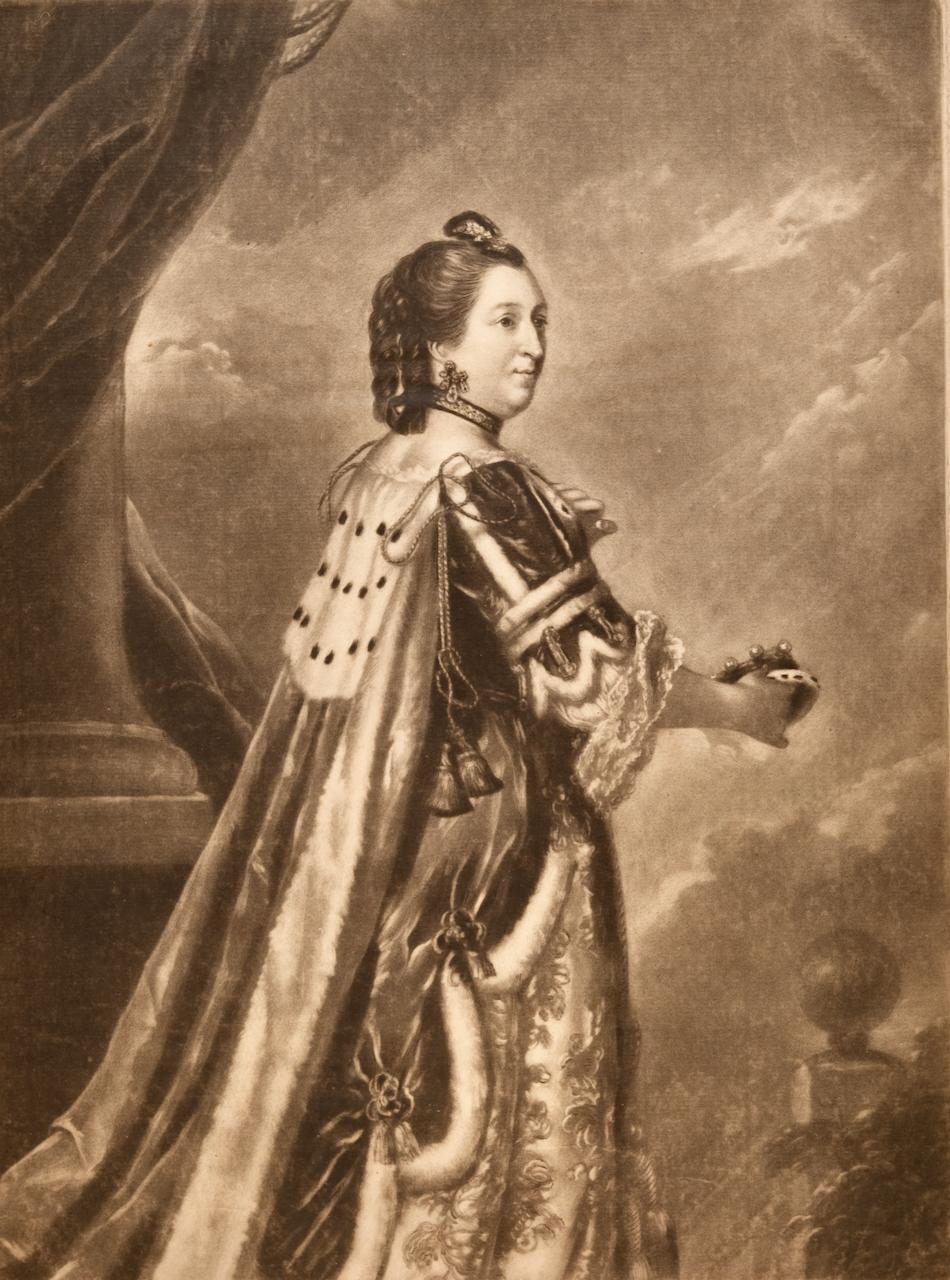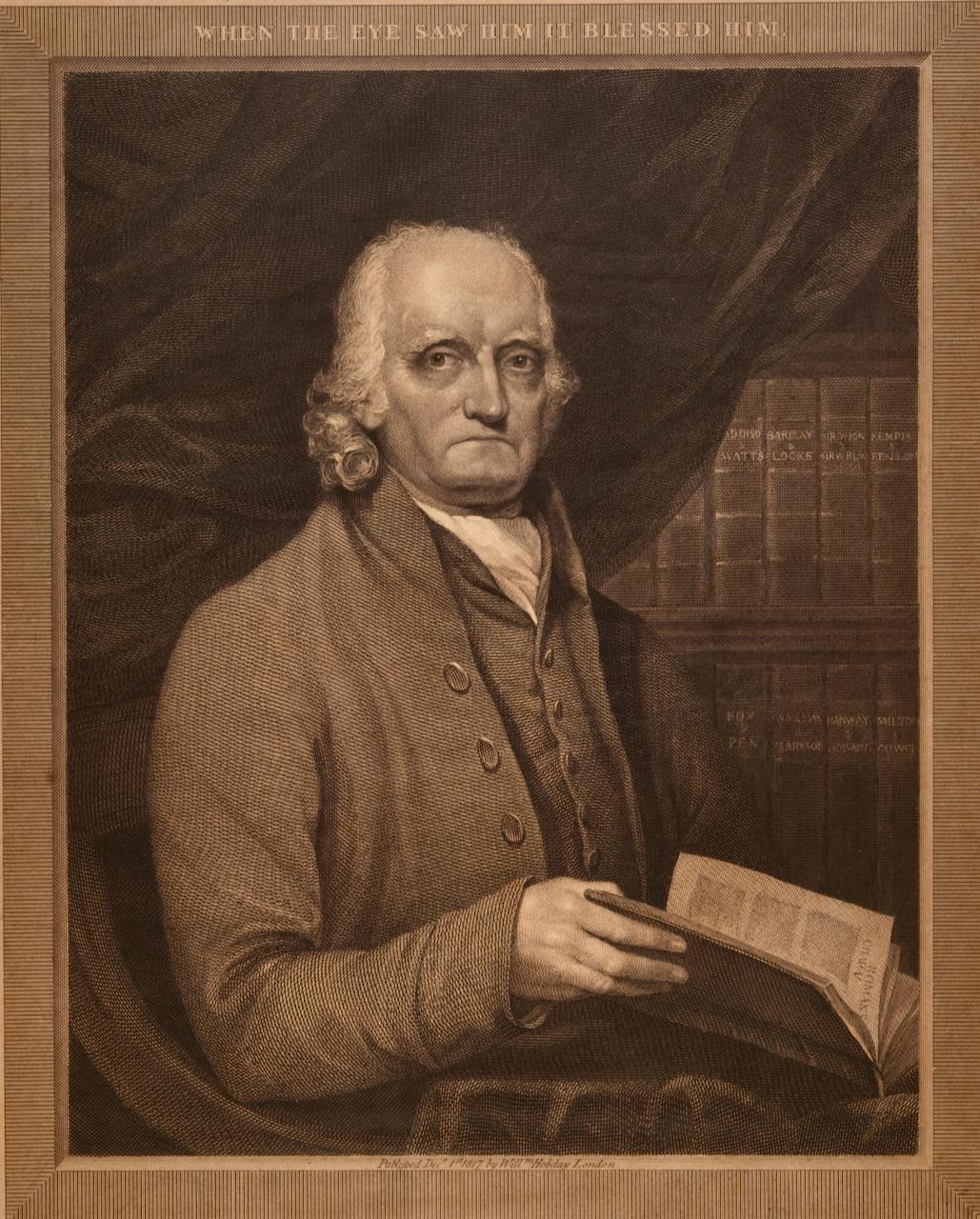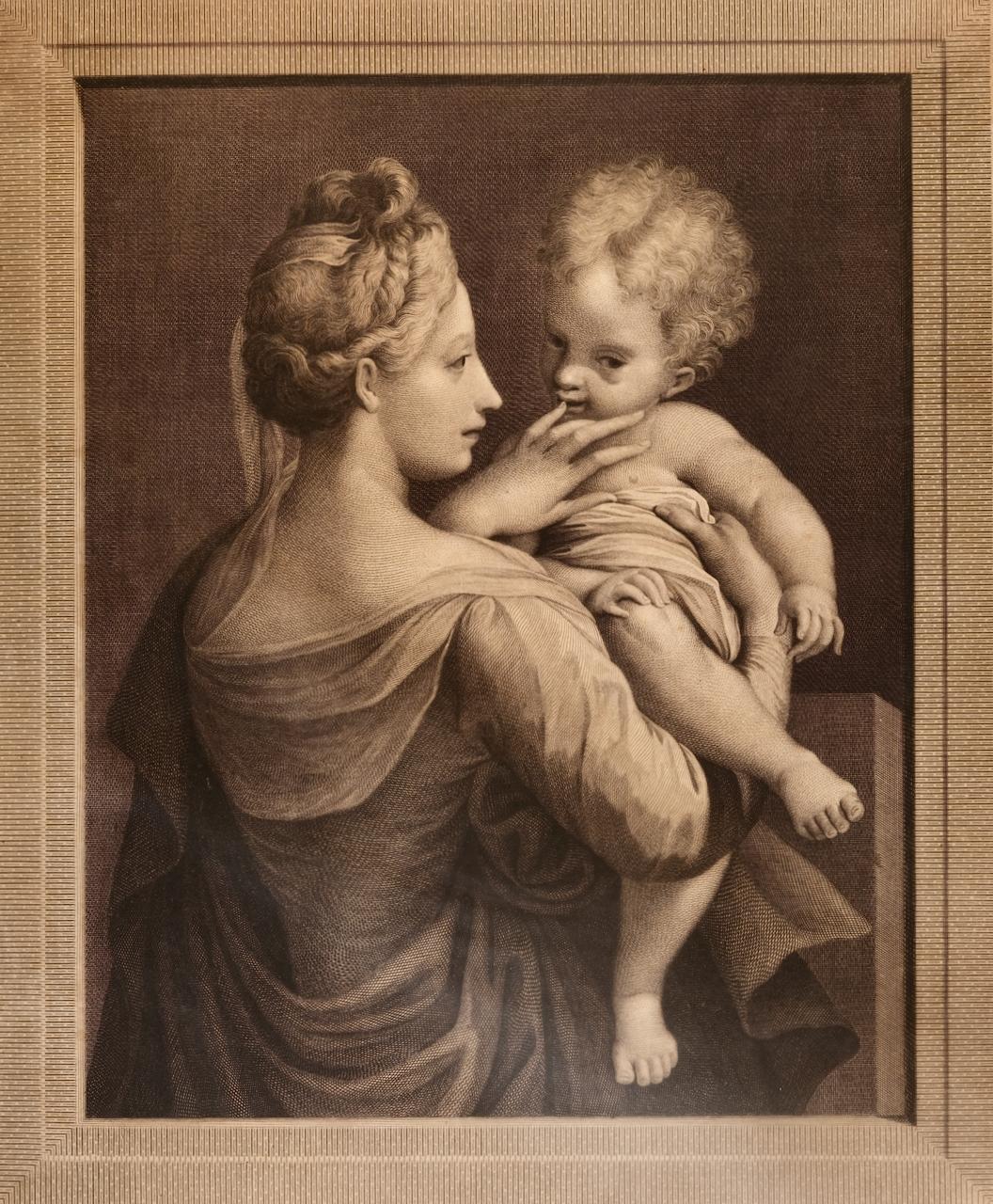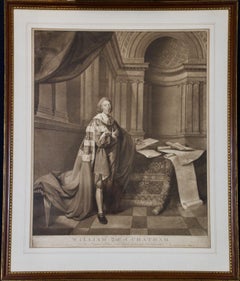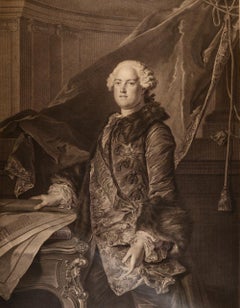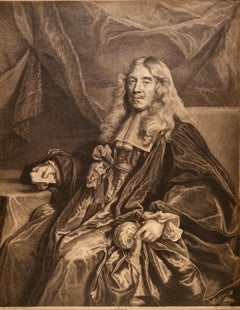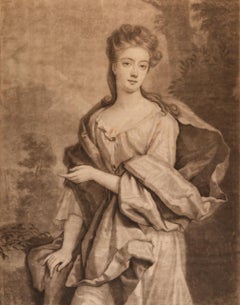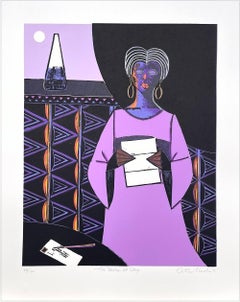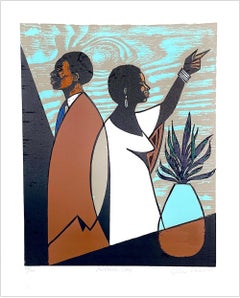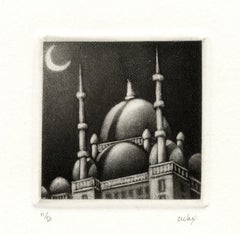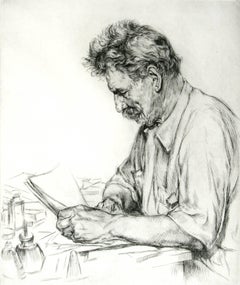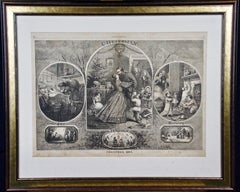
"Christmas 1863", Thomas Nast's Civil War Harper's Weekly Woodcut Engraving
Want more images or videos?
Request additional images or videos from the seller
1 of 9
Thomas Nast"Christmas 1863", Thomas Nast's Civil War Harper's Weekly Woodcut Engraving1863
1863
$975List Price
About the Item
- Creator:Thomas Nast (1840 - 1902, American, German)
- Creation Year:1863
- Dimensions:Height: 23.38 in (59.39 cm)Width: 28.38 in (72.09 cm)
- Medium:
- Period:
- Condition:
- Gallery Location:Alamo, CA
- Reference Number:Seller: #36201stDibs: LU117325453591
About the Seller
5.0
Platinum Seller
Premium sellers with a 4.7+ rating and 24-hour response times
Established in 2011
1stDibs seller since 2019
285 sales on 1stDibs
Typical response time: 1 hour
Authenticity Guarantee
In the unlikely event there’s an issue with an item’s authenticity, contact us within 1 year for a full refund. DetailsMoney-Back Guarantee
If your item is not as described, is damaged in transit, or does not arrive, contact us within 7 days for a full refund. Details24-Hour Cancellation
You have a 24-hour grace period in which to reconsider your purchase, with no questions asked.Vetted Professional Sellers
Our world-class sellers must adhere to strict standards for service and quality, maintaining the integrity of our listings.Price-Match Guarantee
If you find that a seller listed the same item for a lower price elsewhere, we’ll match it.Trusted Global Delivery
Our best-in-class carrier network provides specialized shipping options worldwide, including custom delivery.More From This Seller
View AllPortrait of William Pitt, Earl of Chatham: Rare Framed Mezzotint after Brompton
By Edward Fisher
Located in Alamo, CA
This is a large framed very rare hand-colored copperplate mezzotint engraved portrait of William Pitt, the Elder, 1st Earl of Chatham by Edward Fisher, published in London in 1779 after a painting by Richard Brompton. Pitt is depicted attired in a flowing regal appearing cape, standing in an ornate room with his left hand outstretched over a serious of manuscripts and scrolls that are laying on a table or desk to his left. The table is covered by a beautiful oriental carpet. The manuscripts include the Magna Carta, a map of the colonies, including Long Island and Staten Island, and papers entitled "A Plan for the Reconciliation between Great Britain and the Colonies", "A Motion Made in 1775 for the Recall of Troops from Boston", "A Provisional Act for Settling the Troubles in America Offered to the House of Lords in 1775", and "It is doing Nothing to repeal a few Scraps of Paper or Pieces of Parchment called Acts of Parliament. But our Business is to repeal the Ill-Will and the Animosity unfortunately now subsisting between Great Britain and North America". This engraving is held by the British Museum and the British Royal Collection Trust.
This large framed mezzotint engraving is presented in a brown wood frame with gold-colored beaded inner and outer trim, and a cream-colored French mat. The frame measures 31.63" high by 26.63" wide by 0.75" deep. There are three short tears along the right edge and mild creasing in the left upper, left lower and right lower corners. It is otherwise in very good condition.
William Pitt (1708-1778) was a member of the British parliament from 1735 to 1761 and prime minister from 1766 to 1768. Pitt was an advocate for the American colonies leading up to the War of Independence. He called for an amiable relationship between Great Britain and the colonies and opposed the Stamp Act and military action in America. He advocated for a withdrawal of English troops from Boston in 1775 and the settling of troubles in America, as two of his manuscripts on the table outline. Pitt's colleague, Lord Shelburne (later the Marquess of Lansdowne) shared his sympathies and after Pitt's death, signed a peace treaty with the United States in 1782.
The American city of Pittsburgh, Pennsylvania is named for William Pitt, the Elder. The name originated when the conflict between the British and French over territorial claims in the Northeast were settled in 1758. General John Forbes and his British army, supported by the American colonial troops, expelled the French from Fort Duquesne (which had been constructed by the French in 1754). Forbes re-named the site for William Pitt the Elder, who at the time was a British statesman. The earliest known reference to the new name, Pittsburgh, is in a letter sent from General John Forbes to Pitt, dated November 27, 1758. Pitt's son, William Pitt, the Younger, like his father, also served as British Prime Minister.
Edward Fisher (1730-1785) was born in Ireland in 1730. He was originally a hatter, but learned engraving in London. He became a member of the Incorporated Society of Artists in 1766, and exhibited there fourteen times between 1761 and 1776. He engraved more than sixty portraits. In addition to this portrait of William Pitt, Earl of Chatham, after Richard Brompton he engraved several portraits after Brompton, including George, Earl of Albemarle, as well as engraved portraits after paintings by Joshua Reynolds, including the Shakespearean actor David Garrick, Hugh, Earl of Northumberland, and Elizabeth, Countess of Northumberland and Laurence Sterne, and Hope Nursing Love, as well as Robert Brown, after Mason Chamberlin, Colley Cibber, after Jean-Baptiste van Loo, Christian VII of Denmark, after Nathaniel Dance, Simon, Earl Harcourt, after Hunter, Roger Long, after Benjamin Wilson...
Category
Late 18th Century Old Masters Portrait Prints
Materials
Mezzotint
Marquis de Marigny: An 18th C. Wille Engraved Portrait after a Tocque Painting
By Louis Tocqué
Located in Alamo, CA
This is a mid 18th century engraved portrait of Abel François Poisson de Vandières, Marquis de Marigny by Jean Georges Wille after a painting by Louis Tocque...
Category
Mid-18th Century Portrait Prints
Materials
Engraving
N. Lambert Seigneur de Thorigny: 17th C. Engraved Portrait After Largillière
By Nicolas de Largillière
Located in Alamo, CA
This is a 17th century engraving entitled "Messire Nicolas Lambert Seigneur de Thorigny, Conseiller du Roy" by Pierre Drevet after a painting by Noicolas de Largillière, published in Paris in 1698. This portrait depicts a three-quarter length view of Nicolas Lambert de Thorigny, who is dressed in elaborate robes and collar of a wealthy Parisian nobleman of the time. He is seated directed to the left and looking directly at the viewer. He is holding an inscribed note in his right hand. A magnificent billowing curtain is in the background. Lambert's coat of arms is shown in the center of the lower inscription area. In the inscription area is lettered with title, production detail: "Nic. Largilliere pinxit" and "Petr. Drevet sculpsit", and publication detail: "Se vend a Paris chez Drevet rüe du Foin au coin du College de Maître Gervais".
Nicolas Lambert, Seigneur de Thorigny (1600-1664), was a French nobleman and military commander who lived in the 17th century. He served in the French army during the Thirty Years' War, a conflict that took place from 1618 to 1648 and involved many European powers. Lambert fought in several battles during the war and rose to the rank of colonel. After the war, Lambert returned to France and became involved in politics. He served as a member of the Estates General, a legislative body that advised the king, and as a governor of several provinces. He was a counsellor and confidant of King Louis XIV. He had the title of Président de la Chambre des Comptes. He also became a member of the French Academy of Sciences, a prestigious institution that promotes scientific research and scholarship. Lambert was known for his military expertise, his intelligence, and his commitment to public service. He iInherited the Hôtel Lambert in Paris from his brother Jean Baptiste in 1644 and hired some of the most prominent artists of the time, including Charles Le Brun to decorate and furnish the building.
This beautiful old master engraving was created with impressive detailed technique. It is printed on laid, chain-linked paper. The sheet measures 18.5" high and 13.38" wide. The sheet is adhered to an archival backing paper at the top. There is a faint horizontal center fold and mild discoloration in the inscription area and in the upper margin on the right, with mild wrinkling here. The print is otherwise in very good condition, considering its age. This engraving is so rare, that no comparable prints could be identified for sale online. It is currently only listed in museum collections, including: The Metropolitan Museum of Art, The British Museum, The Louvre, The Riksmuseum, The Victoria & Albert Museum, The Fitzwilliam Museum at the U. of Cambridge, The Boston Museum of Fine Arts, Harvard Art Museums, The Finnish National Museum, The Philadelphia Museum. It is shown in the Metropolitan Museum's Cataloque of French paintings entitled: "French Paintings in The Metropolitan Museum of Art, published in 2018, page 36. The page is included in the photos.
Nicolas de Largillière (1656-1746) was a French portrait painter who achieved great success and acclaim during the late Baroque and Rococo periods. He was born in Paris and trained under the painter Antoine Goubeau. He studied in Antwerp and London before returning to France. While in England he was a favorite painter of King Charles II and King James II of England...
Category
Late 17th Century Portrait Prints
Materials
Engraving
The Duchess of St. Albans: A 17th C. Portrait After a Kneller Painting
By (After) Sir Godfrey Kneller
Located in Alamo, CA
This is a 17th century engraved mezzotint portrait of the Duchess of St. Albans by John Smith, after a painting by Sir Godfrey Kneller. It was published in London by John Boydell in 1694.
The Duchess of St. Albans (1642-1712) was a woman named Diana de Vere. She was born in 1642, the daughter of Aubrey de Vere, the 20th Earl of Oxford. In 1662, she married Charles Beauclerk, the illegitimate son of King Charles II and his mistress, Nell Gwyn. As a result of her marriage, Diana became the Duchess of St. Albans, and she and Charles had several children together. Diana was known for her beauty and charm, and she was a prominent figure in the court of King Charles II. Despite her husband's illegitimate birth, Diana was highly respected in the royal court and was known for her intelligence and wit. She was a patron of the arts and supported many artists and writers of the time. Diana lived through a tumultuous period of English history, including the Great Fire of London and the Glorious Revolution, which saw King James II replaced by William of Orange. She died in 1712 at the age of 70 and was buried in Westminster Abbey. Descendants of Diana and her husband, who was an illegitimate son of King Charles II, include Diana, Princess of Wales and her son William, Duke of Cambridge.
An author wrote of her: "The line of Vere, so long renown’d in arms,
Concludes with luster in St. Albans’s charms;
Her conquering eyes have made their race complete,
It rose in valor, and in beauty set."
This striking mezzotint engraving depicts Diana, Duchess of St Albans in a three-quarter length pose, standing, wearing loose flowing dress and a wrap. She has a very serene, calm appearance as she is looking straight at the viewer. There is a landscape of trees in the background. The print is adhered in the corners to an archival backing, which is itself adhered in the upper corners to a larger backing. The print is trimmed to just beyond the plate mark. There are areas of discoloration in the margins and in the inscription area, but the print is otherwise in very good condition. The sheet measures 14.5" high and 10" wide. This mezzotint is held by multiple museums and institutions, including The British Museum, The National Portrait Gallery London, The Fine Arts Museum of Boston, The Lewis Walpole Library at Yale, The Yale Center for British Art, The Fitzwilliam Museum at Cambridge and The National Galleries of Scotland. The original Kneller painting is part of the British Royal Collection Trust and hangs in the King's Private Dining Room at Hampton Court Palace.
Sir Godfrey Kneller (1646-1723) was a leading portrait painter of his time, particularly renowned for his depictions of the British aristocracy and royalty. He was born in Lübeck, Germany, and trained in Amsterdam under the painter Ferdinand Bol...
Category
Late 17th Century Portrait Prints
Materials
Mezzotint
Elizabeth, Countess of Northumberland: Mezzotint After a Painting by J. Reynolds
By Joshua Reynolds
Located in Alamo, CA
This is an 18th century mezzotint portrait of Elizabeth, Countess of Northumberland, Baroness Percy by Richard Houston after a painting by Joshua Reynolds, published in London by Robert Sayer in 1763. It is a rare, full length portrait of Elizabeth, who was known as Lady Betty. Lady Betty stands, facing to the right, holding her coronet, and wearing her peeress’s ermine and velvet robes over a brocade dress. In the background are a column, a billowing drape, and the grounds of Alnwick Castle...
Category
Mid-18th Century Portrait Prints
Materials
Mezzotint
Richard Reynolds, Society of Friends: 19th C. Engraved Portrait by Wm. Sharp
By William Sharp
Located in Alamo, CA
This is an early 19th century engraved portrait of the industrialist and philanthropist Richard Reynolds by William Sharp after William Hobday. It was published in London by Rudolph Ackerman in 1817. The print is entitled "Richard Reynolds of the Society of Friends, Late of Bristol". This three-quarter length portrait of Reynolds depicts him seated, directed to right, looking towards the viewer. He is holding an open book, wearing a plain suit. A curtain in the background is pulled to the left, revealing bookshelves. Some of the books are labelled 'Addison & Watts' 'Kempis & Fenelon' 'Milton & Cowley' etc. The inscription above the portrait reads: "When the eye saw him it blessed him". The lettering below the image reads: "Richard Reynolds of the Society of Friends, Late of Bristol; Whose Life and Fortune were devoted to the Glory of God by relieving the humble in Distress.', This plate is dedicated by Permission to his Royal Highness, the Prince Regent by his most devoted very humble servant William Hobday."
This engraving is printed on thick paper. The sheet measures 16" high and 12" wide. It is adhered to an archival backing in the upper left corner. There is mild discoloration and toning in the margins, but it does not involve the image.
Richard Reynolds (1735-1816) was a prominent member of the Society of Friends, also known as Quakers, in the 18th and 19th centuries. He was born into a wealthy family in Bristol, England, and inherited a successful copper smelting, iron manufacturing business from his father. Despite his privileged upbringing, Reynolds was known for his deep concern for the poor and his commitment to social justice. He used his wealth and influence to support a range of philanthropic causes, including the abolition of slavery, the improvement of working conditions for miners and factory workers, and the provision of education for the poor. Reynolds was also a prominent supporter of the Quaker...
Category
Early 19th Century Portrait Prints
Materials
Engraving
You May Also Like
THE BREAK OF DAY Signed Woodcut, Black Woman Reading Letter, Lavender Dress
By Otto Neals
Located in Union City, NJ
THE BREAK OF DAY is an original limited edition woodcut print by the African-American painter and sculptor, Otto Neals. The woodblock used to print THE BREAK OF DAY was hand-carved b...
Category
Early 2000s Contemporary Portrait Prints
Materials
Woodcut
ANOTHER DAY Signed Woodcut, Modern Portrait, Black Couple, Brown, Blue, Beige
By Otto Neals
Located in Union City, NJ
ANOTHER DAY is an original limited edition woodcut by the American painter and sculptor, Otto Neals. The woodblock used to print ANOTHER DAY was hand carved by Otto Neals and printed in shades of brown, light blue, beige, and black on archival Rives BFK printmaking paper, 100% acid-free, enhanced with hand colored accents. ANOTHER DAY is a dramatic, contemporary black couple portrait portraying a man and woman standing back to back, the woman's arm raised up and pointing in front of her. She wears a stark white, bell-sleeved dress and large teardrop shaped dangle earrings and bangle bracelet, set against a dramatic natural wood grain patterned background, a large potted plant positioned on the table in the foreground. The man dressed in a warm brown colored suit, wearing white shirt and necktie, his dignified male profile looks straight ahead to the left of the composition adding visual interest and mystery.
Print size - 25 x 20 inches, unframed, mint condition, pencil signed and numbered by Otto Neals, Certificate of Authenticity provided (actual print number may vary from photo upon availability)
Image size - 19.75 x 15.75
Edition size - 100, plus proofs
Printer - JK Fine Art Editions Co. NJ
Publisher - Mojo...
Category
Early 2000s Contemporary Portrait Prints
Materials
Woodcut
Architextures
By Carol Wax
Located in New Orleans, LA
Architextures is a suite of 8 mezzotints in an edition of 50 created in 1984:
Mosque and Mosque Interior (5.1 cm x 5.1 cm)
Dome and Dome Interior (5.7cm x 3.8 cm)
Castle and Castle ...
Category
1980s American Modern Interior Prints
Materials
Mezzotint
Portrait of Albert Schweitzer.
By Arthur William Heintzelman
Located in Storrs, CT
Portrait of Albert Schweitzer. Etching. 11 3/4 x 9 3/4 (sheet 16 1/4 x 14). Illustrated: Beall, American Prints in the Library of Congress, page 205....
Category
1950s American Modern Interior Prints
Materials
Etching, Drypoint
$750 Sale Price
50% Off
Un Sculpteur de Paris
By Arthur William Heintzelman
Located in Middletown, NY
Etching and drypoint on cream laid Van Gelder Zonen watermarked paper, 8 7/8 x 6 1/2 inches (220 x 164 mm), full margins. Signed, titled, and inscribed "ed. 100" in pencil, lower mar...
Category
Early 20th Century Modern Interior Prints
Materials
Laid Paper, Drypoint, Etching
Card Players (16/100), 1959 Framed Figurative Lithograph Print, Interior Scene
By Kenneth Miller Adams
Located in Denver, CO
This lithograph titled Card Players 16/100, created by renowned artist Kenneth Miller Adams (1897-1966) around 1959, captures a lively interior scene of several male figures engrossed in a card game. The print is an exceptional example of Adams' figurative work, showcasing his skill in portraying dynamic social moments. The lithograph is presented in a sleek black frame with archival materials, and the outer dimensions of the framed piece are 25 ⅝ x 31 ¼ x 1 ⅛ inches. The image sight size is 18 ½ x 24 ¼ inches.
This piece remains in excellent condition, clean, and well-preserved. Please contact us for a detailed condition report.
Provenance: Private Collection, Denver, Colorado
Expedited and international shipping is available—please reach out for a quote.
About the Artist:
Kenneth Miller Adams, born in Kansas in 1897, began his art career in Topeka in 1913, studying under artist G.M. Stone. He later continued his education at the Art Institute of Chicago before serving in World War I. After his service, Adams studied at the Art Students League in New York City and then traveled abroad to immerse himself in Italian and French art.
In 1924, Adams returned to Kansas, where his friend Andrew Dasburg encouraged him to move to Taos, New Mexico. There, Adams became the youngest and final member of the Taos Society...
Category
1950s American Modern Portrait Prints
Materials
Lithograph
Recently Viewed
View AllMore Ways To Browse
Antique Engraving Machine
Antique Santa Claus
Antique Uncle Sam
Donkey Toy
Violin Sculpture
Sculpture By Leonard
19th Cat Painting
Auguste Rodin Bronze Sculptures
Black Steel Garden Sculptures
Karo Martirosyan
Russian Movie
Western Saloon Art
Antique Portrait Picture
Heart Sculpture Resin
Mayan Stone
Naked Man Painting
Oil Painting With Brass Frame
Rise And Fall Light
